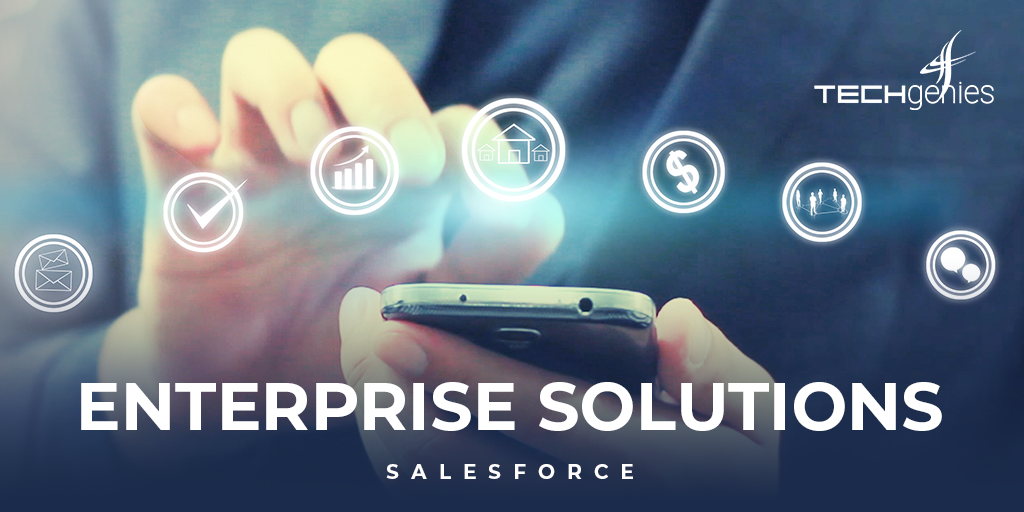If Salesforce’s record 33% YoY growth is any indication, enterprises of all types and all sizes are jumping on the customer relationship management (CRM) software bandwagon.
But before you decide Salesforce is a solution for your organization just based on widespread adoption, let’s look at what Salesforce is, what it can do for your organization, and how to implement it.
Customer Relationship Management (CRM): Effective Software Solutions
Using cloud-based technology, Salesforce offers its customers an array of apps and analytic capabilities, all aimed at keeping users in tune with their customers and the business processes that impact them. For the most part, this is centered around:
- Retaining customers
- Maintaining satisfaction
- Finding new customers
- Understanding existing customers
How can salesforce accomplish this?
With a cloud-based platform, users can track data about customer support, view customer complaints, or track success stories, all in real-time. And because the solution is cloud-based, it’s accessible to its users anywhere, offering overextended business leaders, even more, control to harness the customer experience on the road, from home, or in the office.
In addition, business leaders can track marketing plans, observe sales leads, measure performance, and monitor spending.
Big Data Analytics Implementation: Putting CRM to Work for Your Business
Salesforce divvies up its applications by business process: a service cloud, an app cloud, and analytics cloud, an IoT cloud, and on the list goes. At the core of all of these applications and the analysis and decisions they enable is the single goal of CRM: improve your business relationships.
Take the retail sector, for example.
A business leader looking to improve the customer’s experience ordering online can’t oversee individual transactions and gain any real understanding of where challenges lie. But she can use Salesforce’s Service Cloud to track customer activity across channels, understand how customer service representatives interact with customers, and assess how long it takes to resolve issues. By analyzing department-level data, she can isolate problems and make data-driven data – not react to a single day shadowing in the field.
Best Practices for Implementing Salesforce
A decision to implement Salesforce is just the beginning. You’ll want to follow these best practices to make the most out of your investment in Salesforce:
- Plan diligently. The planning and preparation phase should be rigorous. Your organization needs to establish what the overall vision is for the organization, identify goals, and outline key metrics. What resources are available? What tools does the business use? Which of these are dependent on one another?
Once the strategic planning is accomplished, the next step is to build the project team that will spearhead the implementation. Typically this should include:
- An executive sponsor who will champion the initiative from inception and beyond implementation
- System administrators
- A project manager
- Users to help QA the implementation (Salesforce calls them “power users”)
- Trainers who can help roll out the solution to users at the organization
For small businesses with a lean staff or organizations light on IT expertise, the implementation team can seem like a hurdle too daunting to clear. But remember: outsourced corporate development is an option for your business if you need to lean on IT staff augmentation services to see your company through implementation.
You’ll also need to choose a project management methodology, which can often mean an assessment of the agile lifecycle model advantages and disadvantages. (Here’s a refresher if you need one).
- Prep your data. While technically this is still part of the planning stage, this deserves its own mention, as reviewing and cleaning your business data is vital to clean, map, and load data – not to mention to identify which data is valuable for tracking. Salesforce cautions that most customers underestimate how much work this step takes.
- Set up and Customize your Salesforce CRM. Salesforce advises customers to keep the initial implementation simple, following three steps:a. Define security settings by mapping which roles should have access to specific datasets.
b. Customize the application to meet your business’ needs, which includes adding custom fields, creating new page layouts, customizing tabs, or coding customized rules.
c. Create reports that address the goals outlined in the planning stage of the project. - Deploy. This is a deceptively short name for such a hefty piece of the implementation, as this stage includes all the company communication necessary to excite users about the launch, not to mention inform them of the practical elements, and also includes adding users correctly, importing data, and training users.
- Champion – and measure – Adoption. It doesn’t matter how seamless the implementation is if end-users aren’t actually putting the software to use. This is why users must be onboarded and encouraged to adopt the solution (remember: an executive sponsor can play a crucial role in leading the charge on this front).
Understanding the capabilities of the software is also vital for any organizational cheerleaders of the platform, and drumming up excitement must be balanced with reasonable expectation setting.
For example, Salesforce isn’t going to transform a salesperson’s sales, but it might offer them the ability to connect in a new way that can.
- Manage releases. Once implemented, the work continues to cycle through this process, beginning with understanding goals and business needs to expand functionality and deepen the value. To engage users and help them feel heard, ideally this process launches immediately after the initial release.
Are you ready to own your customer relationships?
Whether you need a seasoned project manager to lead the charge with your Salesforce CRM implementation or want to turn over the data preparation process to us, TechGenies has the flexibility to meet your business needs and the experience to exceed your technology wishes. Start a conversation with us today to kick off the future of your customer relationship management at info@techgenies.com.
